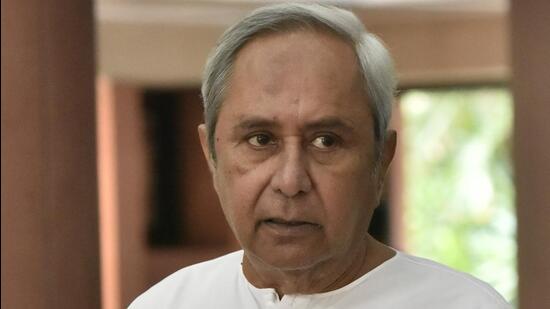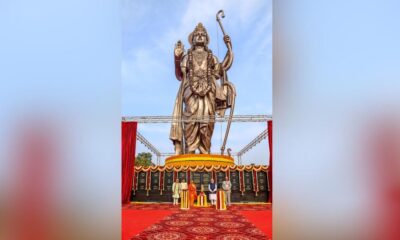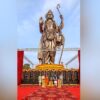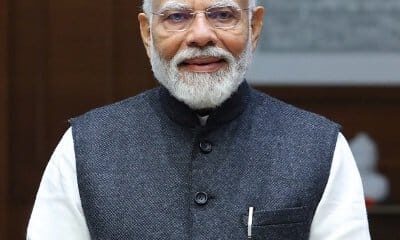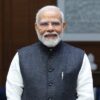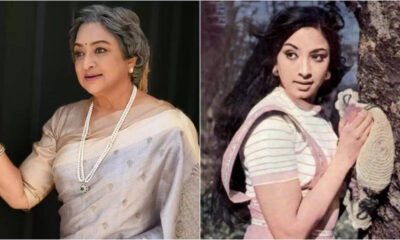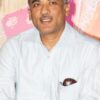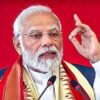Naveen Patnaik clocks 23 yrs and counting as Chief Minister of Odisha 2nd-longest serving CM
Naveen Patnaik clocks 23 yrs and counting as Chief Minister of Odisha 2nd-longest serving CM
Naveen Patnaik of Odisha has emerged as the second longest serving chief minister of a state in India Odisha clocking 23 years and 139 days on Sunday,22 July, surpassing the record of former West Bengal chief minister Jyoti Basu.
Now Patnaik is second only to Pawan Kumar Chamling of Sikkim, who holds the enviable record of helming a state for the longest time of 24 years and 166 days.
The 76-year-old Patnaik was in 1997 dismissed as a novice by detractors and well-wishers alike following the death of his father and former chief minister Biju Patnaik
Patnaik made it known that Odisha is being neglected and not getting support from Centre, says Patnaik
Patnaik is now second only to Pawan Kumar Chamling of Sikkim, who holds the enviable record of helming a state for the longest time of 24 years and 166 days between December 1994 and May 2019. Basu left office in 2000 after ruling the eastern state for over 23 continuous years, while Chamling lost the assembly polls in May 2019 in the Himalayan state.
The 76-year-old Patnaik was in 1997 dismissed as a novice by detractors and well-wishers alike after the death of his father and former chief minister Biju Patnaik. If the Biju Janata Dal returns to power in the assembly polls due next year, Patnaik will be well on his way to become the longest serving chief minister in the country.
Often termed as an accidental politician in the initial days, the alumnus of Doon School and St Stephen’s learnt the art of politics quickly after he first won the Lok Sabha by-election from Aska in 1997, a seat that fell vacant following the death of his father.
But With help from the Bharatiya Janata Party, Patnaik and others broke away from the Janata Dal and formed Biju Janata Dal. In the Lok Sabha polls the next year, his party allied with the BJP and Patnaik joined Prime Minister Atal Bihari Vajpayee’s government as the steel and mines minister.
Patnaik would have perhaps continued as Union minister had it not been the super cyclone of October 1999 that killed more than 10,000 people and devastated most of coastal Odisha. The Congress regime that was already mired in a series of controversies, including the murder of Australian missionary Graham Staines and his two young sons, came in for much criticism when chief minister Giridhari Gamang threw up his hands in despair while millions of Odias looked for food and shelter after losing their home and hearth to the cyclone.
The alliance with BJP continued till 2009, when he severed it over the Kandhamal riots that threatened to stain his secular image. Although the BJP has made several unsuccessful bids at unseating Patnaik, his popularity has never been dented, thanks to a slew of popular measures and a robust and well-entrenched party cadre. While his image of a politician with a clean image has kept him in good stead, his biggest edge is an innate ability to manoeuvre in the face of political challenges.
From starting a cash assistance programme called Kalia on the eve of 2019 polls that managed to cut the party’s losses in at least one-fifth of the assembly seats to doling out money and assistance to women self-help groups, who form the bulk of his vote bank, Patnaik has done everything possible to keep his voter base intact.
Hosting the men’s hockey World Cup twice in five years and sponsoring the Indian men’s and women’s hockey team, Patnaik has used sports to battle any sense of anti-incumbency that may have seeped through the electorate in his 23 years in power.
When he took charge of battered Odisha in March 2000, the state’s finances were in tatters due to financial profligacy of the previous regimes that were plagued with inefficiency and corruption. By the end of 2001-02, the state had a revenue deficit to the extent of over 6 percent of its gross state domestic product. But those days are long past.
In the 23 years of his rule, per capita income in Odisha has risen from ₹10,662 in 1999-2000 to ₹150,676 in 2022-23.
Amidst 1950 and 1980, Odisha grew at 2.77%, while the country outpaced it at 3.5%. Since 2012-13, Odisha’s economy has been growing at an average annual rate of 8.1%, faster than the national GDP in the past seven years, except 2014-15 and 2017-18.
During the 60s, hunger deaths of thousands of people were reported from the drought-hit Kalahandi and Koraput districts. Much of it changed after the government started providing rice at ₹2 per kilo to 55 lakh families below the poverty line from 2008. In 2013, the rates were further lowered to ₹1 per kg of rice.
Odisha clocked the fourth- highest drop in multidimensional poverty among all states in the past half a decade, according to a report of NITI Aayog released earlier in the week. The proportion of multidimensional poor fell from 29.34% in 2015-16 to 15.68% in 2019-21.
A shrewd politician aware of limitations, Patnaik has never nursed an ambition for power in the Centre and has chosen to be equidistant from both the BJP and Congress after 2009. Between 2009 and 2014, he maintained cordial relations with the United Progressive Alliance government, but after Narendra Modi came to power in 2014, he has backed the National Democratic Alliance in several legislations, while deftly maintaining his image of a non-aligned politician.
Patnaik would certainly break Chamling’s record next year after the 2024 assembly polls, BJD vice-president Prasanna Acharya said. “We are happy that our chief minister has crossed the record of West Bengal’s former chief minister Jyoti Basu,” he said.
Meanwhile as per Congress leader Santosh Singh Saluja.
Naveen Patnaik deserves to be congratulated for becoming the second longest serving chief minister, but he has not done anything remarkable in the past few years.
News Edit K.V.Raman


